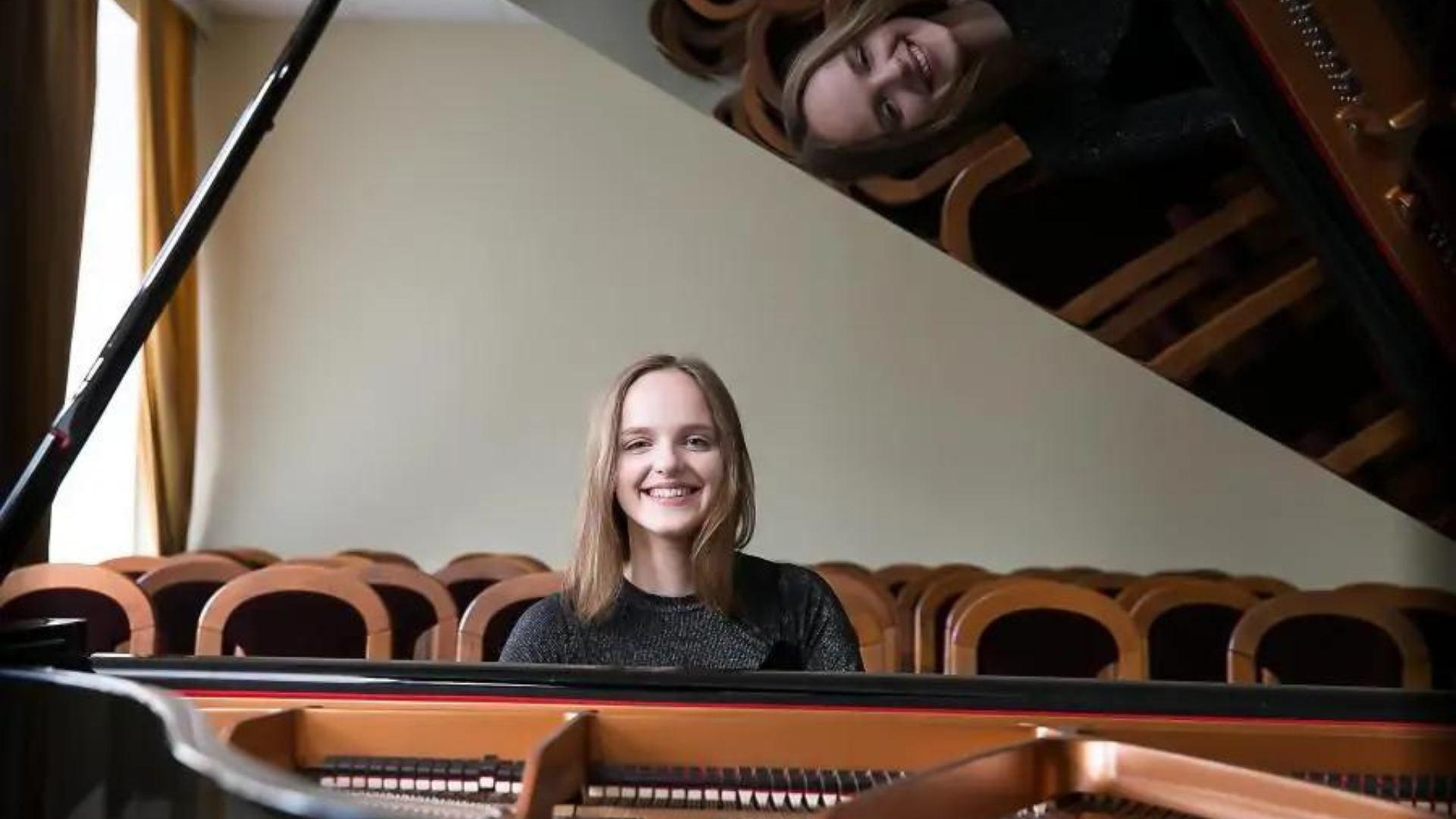
Adrian Partington – conductor Misha Kaploukhii – piano Madeleine Boreham – soprano Redmond Sanders – baritone RCM Symphony Orchestra and Chorus Mark Biggins – chorus director Liszt Piano Concerto no 2 in A major S 125 Vaughan Williams A Sea Symphony Continuing our celebrations for Vaughan Williams’ 150th anniversary, renowned choral conductor and RCM alumnus Adrian Partington leads the monumental work that firmly put the composer on the map. Alongside, RCM Concerto Competition Winner Misha Kaploukhii performs Liszt’s second and final piano concerto – an unconventional work in one single, sweeping movement, where piano and orchestra are woven together in expansive symphonic textures.
A Sea Symphony and much more at the RCM last night
https://youtu.be/x4L8MaAOga0
To see and hear all that youthful passion and energy in the Sea Symphony with a chorus and orchestra brought back such memories.All the concerts I had heard in this hall when as a schoolboy I discovered the wonders of music that were being offered to me by Sir Adrian Boult,Yehudi Menuhin,the debut of John Lill with Rachmaninov 3rd,George Barber,Dennis Lee ,Enloc Wu , Gwyneth Prior and many more.
All there for a schoolboy to enjoy and acquire a taste for music of great quality that together with my lessons with Sidney Harrison were to be the basis for a lifetime in music.

Today there was to marvel again at the 19 year old Misha Kaploukhii who opened the concert,an hors d’oevre you might say,with Liszt’s 2nd Piano Concerto.
Another performance of authority and class just as I had heard a few weeks ago when he played Rachmaninov First Piano Concerto at Cadogan Hall.Today was the prizewinners concert of the Concerto competition which he had won.
Under the scrupulous eyes and ears of his mentor Ian Jones he is revealing a potential that seems to have no limits.

The second concerto is much less of a showpiece than the first and it takes not only a virtuoso technique to do it justice but also a sense of architecture and musicianship that rarely go hand in hand.

It was from the opening flourishes in Mischa hands that you could feel his chamber music approach as he listened so sensitively to the opening clarinet and wind solo.
They were of course much too slow but Misha accepted the challenge and turned every phrase into a golden thread of beauty and style.

He continued with the superb cello solo in duet with the piano reaching a passionate conversation of red hot eloquence as the concerto gradually built in intensity.It was in the final part where Misha’s virtuosity was quite breathtaking as he let leash a series of octaves and glissandi as the concerto grew in pomp and circumstance with it’s rather military style brass band ending.Misha now at one with the conductor Adrian Partington and orchestra gave great style to this rather bombastic ending and together they brought an architectural arch to rest without any vulgarity or demonstrative virtuosity.There was excitement,intensity but above all an aristocratic style that gave great cohesion and class to what can so often turn into a showman’s warhorse.

The informal discussions and introduction by David Owen Norris were absolutely fascinating and an added plus to this live stream that I could listen to in the comfort of my own home by the sea in Italy with the log fire ablaze!

The Sea Symphony brought back memories of ‘A’levels where it was the set work in 1967!
What an impressive opening especially with a youthful chorus of 200 voices !And all through the superb style and authority they brought to this extraordinary work was a true revelation.The youthful chorus director Mark Biggins certainly had been hard at work with passion and intelligence as he explained to David Owen Norris.

It was though the extraordinary stage presence and overwhelming intensity of the baritone Redmond Sanders that took ones breath away.

Madeleine Boreham was the superb soprano soloist but with a much smaller role.It was fascinating to see them so simply in conversation and then to see what presence they had on stage under the authoritative baton of Adrian Partington.
A superb evening of music making of the highest order what a wonder that the world can hear via the superb streaming and direction from the RCM.

Liszt wrote drafts for his Concerto for Piano and Orchestra No. 2 in A major, S.125,during his virtuoso period, in 1839 to 1840. He then put away the manuscript for a decade. When he returned to the concerto, he revised and scrutinized it repeatedly. The fourth and final period of revision ended in 1861. Liszt dedicated the work to his student Hans von Bronsart , who gave the first performance, with Liszt conducting, in Weimar on January 7, 1857.Liszt called this work Concerto symphonique while in manuscript. This title was borrowed from the Concertos symphoniquesof Henry Litolff. Liszt liked not only Litolff’s title but also the idea for which it stood. This concept was one of thematic metamorphosis — drawing together highly diverse themes from a single melodic source .With his Second Piano Concerto, Liszt took the practice of creating a large-scale compositional structure from metamorphosis alone to an extreme level. Its opening lyrical melody becomes the march-theme of the finale. That theme, in turn, morphs into an impassioned theme near the end of the concerto. The theme which begins the scherzo reappears at that sections end disguised as a totally different melody in another key. This last transformation is so complete that it is easy to not recognize the connection. Key, mode, time signature, pace and tonal color have all been transformed. For Liszt to so radically alter the music’s notation while remaining true to the essential idea behind it shows a tremendous amount of ingenuity on his part.




























































































































